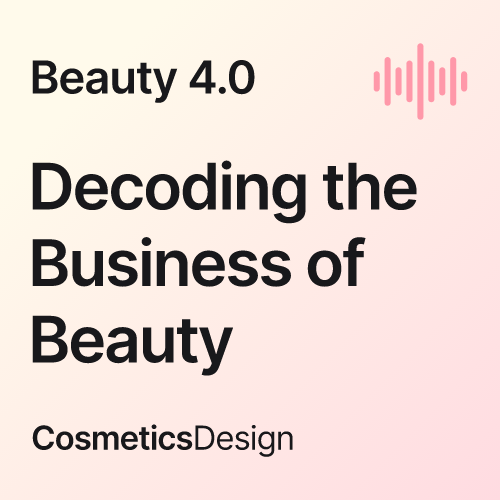How to win over… beauty consumers in India’s tier-two and -three cities

With its huge 1.4 billion population, India is one of the world's largest consumer markets. Despite its appeal, it remains relatively untapped by major brands and multinational chains.
Nirmalya Kumar, professor of marketing at Singapore Management University’s (SMU) Lee Kong Chian School of Business, highlighted that global companies like IKEA, Zara, and Starbucks have yet to explore their full potential in their market.
During the Tax Free World Association (TFWA) conference in Singapore this year, he said that while the Indian economy remains a small percentage of the global economy, it contributes disproportionately to global growth due to its size and rapid expansion, especially in contrast to China’s recent slowdown.
“If you are seeking growth as a company, you cannot ignore India,” said Kumar, who has authored India Inside: The Emerging Innovation Challenge to the West and India’s Global Powerhouses: How They Are Taking on the World.
Indeed, with the slowdown in China, India has been positioned as the bright spot in beauty, a new avenue brimming with the promise of growth.
Over the past couple of years, global beauty conglomerates such as L’Oreal, Shiseido, Estée Lauder and Coty have set their sights on the Indian market. This has resulted in the launch and expansion of brands such as CeraVe, SHISEIDO, NARS, The Ordinary, and Kylie Cosmetics in India.
“When you look at the beauty personal care sector in itself, India is a shining star. I’ve talked about the beauty revolution that's taking place and it's really unparalleled in terms of the kind of growth that you're seeing not just in in the metro cities, but even across the market at some of the smaller markets within India in itself,” said Shruti Chandra, vice president at Invest India, Ministry of Commerce and Industry Retail, Consumer Goods and E-Commerce.
Anchit Nayar, chief executive of beauty e-commerce of Indian firm Nykaa, said that India has become a priority for global beauty brands in the wake of China’s sluggish recovery.
“India today is truly becoming a priority market for global beauty companies. They're realising the potential that India has to deliver to them, not just growth, but also scale. And I think, given everything that happened in China over the past few years, there is a desire to de-risk and to find new avenues of growth. And India, of course, is first and foremost on that list,” he said during the firm’s full-year 2024-25 earnings conference in May.
Underpinning the growth and excitement of beauty in India, are the tier two and tier three cities of the vast and diverse country.
Beyond Delhi, Mumbai, and Bangalore, there are cities like Jaipur, Lucknow, Chandigarh, Bhopal, and Patna, which are among the fastest-growing lower-tier cities in India.
“Increasingly, the growth that we're seeing, when you look at consumption patterns, is that demand in tier two and tier three cities across categories is growing at two times the rate of the growth that you're seeing in the metros,” said Chandra.
These tier two and tier three cities are growing rapidly and stealing the show from the bustling metros with more citizens empowered with rising disposable incomes.
“It’s very important for brands to look at the tier two and three cities, which are the bedrock of the growth we are seeing,” said Chandra.
Consumer profile: Cautious and value-driven
When it comes to the difference between a tier one consumer and tier two or three consumer, some would assume that it all boils down to price and the latter would be less inclined to shell out top dollar for a beauty product. However, Sanjana Balani disputes this simplistic assumption.
Balani is the founder and CEO of Indian skin care brand Potion Inc, which aims to meet the demand for efficacy with natural ingredients. Like many new brands on the market, Potion initially targeted customers in the tier one cities.
“With tier one, its slightly more predictable because a lot of the consumer demands are based on what’s happening globally. So, if Kylie Jenner were to launch something in the US that has niacinamide or salicylic acid, for example, it will trickle into Mumbai and Delhi pretty quickly.”
Potion, which was founded in 2023, is now shifting its focus to capturing consumers in tier two and three cities, where many brand founders like Balani believe their future growth potential lies.
According to Suyash Saraf, co-founder of beauty brand Dot & Key, said that around 70% of its revenue came from lower tier cities.
After the firm was acquired by Nykaa in 2021, Dot & Key grew fivefold in three years as it repriced to cater to a more mass audience.
“We as a brand believe that the next growth story is coming from beyond tier one, and that is where Dot & Key as a brand is structuring its portfolio, it's pricing, et cetera, so it can cater to this mass audience which have the aspiration to buy the products, yet don't have the accessibility around them,” he said.
Balani expressed similar excitement about the growth potential in India’s lower-tier cities with the evolution of their beauty consumers.
“I think we are seeing a very different shift now. The main difference in the lower-tier cities is that the consumers are younger, more aspirational, and very well-informed of global trends. There are being exposed to many brands now and that means they are a lot more experimental – and less loyal,” she explained.
Compared to their tier one counterparts, they are more cost-conscious, which makes marketing to them more of a challenge.
“They are extremely price sensitive, extremely value driven. When there’s a higher ticket price, they need to be extremely well-informed. They have disposable income, but they are a lot more particular about how they spend it,” said Balani.
Brands should expect these consumers to be very well-researched and more demanding of facts and figures from their communication.
“As we adapt our strategies to these consumers, we cannot just rely on visual appeal. We’ve prioritised information on our ingredients and their bioactivity. We have to give them a lot more numbers, a lot more facts. We need to give them results and information about the product. These customers spend a lot more time in the decision-making stage before they actually make the purchase. It’s not as dopamine-driven,” said Balani.
In these markets, sometimes what is most effective is good old-fashioned word-of-mouth. It is essential to have testimonials and reviews, including elements like before-and-after shots and more quantitative assessments.
“They spend a lot more time reading reviews on your product listing prior to making that purchase decision. If you look at products that are doing extremely well in tier two and tier three cities, they put a lot more objective information. They try and promote trials and tests and reviews and testimonials. Simultaneously, they will do a social media campaign with influencers for these products, because they know, on average, people spend more minutes on a product listing,” Balani explained.
Another strategy brands have employed in India’s lower tier cities is to offer different sizes, Balani observed.
“Like I said, these consumers love to experiment. A lot of brands – global and local – have actually created separate sizes for these cities to give them a chance to experiment and to give them an idea of the brand ethos before they fully buy in. Don’t forget, because they are so experimental, they also have FOMO (fear of missing out). And yes, people from tier two and three cites will buy the smaller sachets even though the price per millilitre is higher.”
The retail landscape
Online shopping serves as a vital lifeline for millions of consumers in India, especially in tier two and tier three cities, where accessibility to the latest and most popular products in brick-and-mortar is limited.
According to a report by PricewaterhouseCoopers, during the festive season of 2023, consumers from tier two, three and four cities contributed to more than 80% of sales for Meesho and Amazon.
Improved internet access is driving more people to e-commerce, prompting brands to seize the opportunity to expand into the lower tier cities.
“The expanding mobile internet penetration in India with the rollout of 5G also presents growth opportunities for e-commerce players to tap into tier two cities and beyond at reduced cost. The rise of e-commerce platforms presents a huge opportunity to reach these consumers directly and e-commerce is probably your best value-for-money right now,” said Balani.
India’s beauty e-commerce landscape has evolved in the past few years with new players rising to challenge the incumbents.
Popular online websites consumers shop for beauty products include Nykaa, Purplle, Myntra, Tira, Tata Cliq, and Sephora. There are also marketplaces such as Amazon and Flipkart. These platforms are the go-to for consumers seeking out premium and luxury beauty products.
These retailers are steadily increasing their assortment of brands and products to fulfil the many needs and demands of the diverse market.
“Players like Nykaa and Purplle will create a completely separate assortment and through performance marketing, boosting it to these cities based on what’s happening in those cities. These could be festivals like Diwali or maybe Jaipur is trickling into winter. So online marketplaces still give you the higher reach,” said Balani.
Offline, the situation is not as straightforward.
According to Euromonitor Internation, India’s small local grocers remain the leading channel for beauty and personal care sales with a 42% share.
Balani explained that when it came to essentials, consumers still prefer to shop at brick-and-mortar stores.
“For your essentials, it’s extremely important to be available on traditional retail because tier two and three consumers are not going online to buy their basics. Instead, they shop at the many mom-and-pop stores which are called kirana stores which can be found within a two-kilometre radius.”
Kirana stores are family-owned and operated shops selling groceries and other sundries. These stores are unique and central to daily life in India. Historically, these stores have also provided informal credit to their customers, allowing people to purchase goods on credit and pay later particularly in rural areas, where there may not be immediate access to banking services.
“You have your local department stores, something like Shoppers Stop. But again, different retail stores have different brands so, but particularly in tier two and tier three cities, I would say it's still dominated by the Kirana stores,” said Balani.
She added: “If Potion launched an everyday essential tomorrow at a similar price ticket like Patanjali, Nivea, or Himalaya, 100% we would want to be there because its important to get right in front of their faces.”
Despite the convenience of e-commerce, brick-and-mortar retail will always be important in a touch-and-try category like beauty.
Euromonitor noted that India’s e-commerce players recognise that and expects them to “increasingly prioritise an omnichannel approach to cater to the wide range of customer needs across India”.
Online operators such as Nykaa have steadily been expanding its offline footprint. Since its first brick-and-mortar store launch in Delhi, Nykaa has unveiled 200 stores as of July 2024 across 72 cities in India.
Some launches over the past quarter included stores in the lower tier cities. The firm launched Nykaa Luxe in Dehradun and Jaipur. It also opened Nykaa On Trend in Amritsar and Rourkela.
“We see our physical retail stores play a very important role in what we call as services and customer engagement. So, our stores serve as a hub for a lot of brands to actually engage and interact with our consumers through experiences and events,” said Nayar.
Now trending: Naturals and clean beauty
Similar to the rest of India, beauty trends are shaped by a blend of traditional practices, cultural influences, and global trends.
“Ayurveda is deeply rooted in their culture of consumers in tier two and three cities. There's still a strong demand for Ayurvedic, herbal, and natural products as they are still seen familiar, safer, and more effective. I would still say tier two and tier three, they love their roots. They love their heritage; they don't want to give it up. They are not ready to let go of that aspect of it,” said Balani.
She noted that within the tier two and three cities, there are likely a difference in ingredient preferences.
“Ingredient is key. For instance, a product with ghee is likely to do well in Chandigarh because Punjabis consume a lot of ghee and it’s a very safe space for them.”
This is driving the growth and preference for local brands especially those that market themselves as natural or Ayurvedic.
At the same time, the global dominance of clean beauty is trickling into the lower tier cities.
“The rise of clean beauty, focusing on transparency and sustainability, is gaining traction even in lower-tier cities. Consumers are still trying to understand where sustainability stands. What is transparency and why does this matter?”
With access to e-commerce and social media, consumers are also learning more about ingredients such as vitamin C and its benefits. To resonate with them, Balani said a ‘hybrid’ approach was necessary.
“Natural ingredients will continue to dominate but they also want the therapeutic benefits of ingredients like vitamin C and salicylic acid. They want that hybrid approach so what I see is more bioactive compounds.”
With Potion Inc, its products feature familiar ingredients such as neem, charcoal, hibiscus, red bell peppers, and patchouli. It also contains ingredients such as hyaluronic acid, salicylic acid, and glycerin.
Furthermore, consumers are increasingly seeking out products with multifunctional benefits, making the selection of ingredients even more important.”
“This is a new world for them. They have disposable income, but they are a lot more particular about how they spend it. For example, they're slowly understanding ingredients like vitamin C, niacinamide. So, when you tell them one product with your multiple benefits, they feel like it's more value for money,” said Balani.
In the short-term, beauty players can expect rapid growth in the lower-tier cities, driven by increasing disposable incomes and greater access to online shopping.
While there is demand for global trends and foreign brands, it is essential for brands to localise their offerings and marketing strategies across the lower-tier cities.
The biggest challenge remains the high price sensitivity especially amid inflationary pressures forcing consumers to become more budget conscious. However, the consumer remains hungry for beauty products and are willing to pay for what they believe is good value.
Addressing the complexities of diverse distribution channels, particularly in physical retail, will be crucial, and companies like Nykaa are making strides in this area to meet consumer needs.
Nevertheless, the lower-tier cities in India should not be ignored. They will play a significant role in the growth of India’s beauty market as it shapes up to be one of the most important markets for the industry.
“With improving infrastructure and digital penetration, lower-tier cities will contribute significantly to the overall growth of the beauty and personal care industry in India,” said Balani.


![Recent product news from Essentials, Justhuman, Camino Rose, matsukiyo and more. [Camino Rose]](/var/wrbm_gb_food_pharma/storage/images/_aliases/wrbm_medium/publications/cosmetics/cosmeticsdesign-asia.com/article/2024/09/06/product-profiles-latest-news-on-the-hottest-beauty-products-in-apac/17722207-1-eng-GB/Product-profiles-Latest-news-on-the-hottest-beauty-products-in-APAC.png)
![Our round-up of the beauty brands in Asia Pacific, featuring news and updates from Kosé, Clinique, Coty and more. [Kose]](/var/wrbm_gb_food_pharma/storage/images/_aliases/wrbm_medium/publications/cosmetics/cosmeticsdesign-asia.com/headlines/brand-innovation/kose-clinique-coty-and-more-in-our-brand-update/17705038-1-eng-GB/Kose-Clinique-Coty-and-more-in-our-brand-update.jpg)
![Nykaa raises stakes in Dot & Key and acquires majority stake in Earth Rhythm. [Earth Rhythm]](/var/wrbm_gb_food_pharma/storage/images/_aliases/wrbm_medium/publications/cosmetics/cosmeticsdesign-asia.com/headlines/business-financial/nykaa-cements-position-in-key-segments-with-investments-in-dot-key-earth-rhythm/17675053-1-eng-GB/Nykaa-cements-position-in-key-segments-with-investments-in-Dot-Key-Earth-Rhythm.jpg)
![Beiersdorf is set to launch NIVEA Face and Eucerin in India. [NIVEA]](/var/wrbm_gb_food_pharma/storage/images/_aliases/wrbm_medium/publications/cosmetics/cosmeticsdesign-asia.com/article/2024/08/19/beiersdorf-outlines-plans-for-nivea-eucerin-launches-in-india/17645947-1-eng-GB/Beiersdorf-outlines-plans-for-NIVEA-Eucerin-launches-in-India.jpg)





![The Powder Shampoo says a waterless conditioner is currently in development. [The Powder Shampoo]](/var/wrbm_gb_food_pharma/storage/images/_aliases/wrbm_tiny/publications/cosmetics/cosmeticsdesign-asia.com/headlines/brand-innovation/the-powder-shampoo-developing-waterless-conditioner-on-the-back-of-consumer-demand/17719813-1-eng-GB/The-Powder-Shampoo-developing-waterless-conditioner-on-the-back-of-consumer-demand.jpg)
![[Getty Images]](/var/wrbm_gb_food_pharma/storage/images/_aliases/wrbm_tiny/publications/cosmetics/cosmeticsdesign-asia.com/article/2024/09/11/beauty-broadcast-australian-olive-oil-producers-urged-to-upcycle-pomace-for-cosmetics-as-health-wellness-interests-surge/17730919-1-eng-GB/Beauty-Broadcast-Australian-olive-oil-producers-urged-to-upcycle-pomace-for-cosmetics-as-health-wellness-interests-surge.jpg)
![Beauty consumers are most likely to prioritise devices and treatments as solution over supplements. [Getty Images]](/var/wrbm_gb_food_pharma/storage/images/_aliases/wrbm_tiny/publications/cosmetics/cosmeticsdesign-asia.com/headlines/market-trends/beauty-supplements-consumers-likely-to-explore-devices-treatments-before-supplements/17712040-1-eng-GB/Beauty-supplements-Consumers-likely-to-explore-devices-treatments-before-supplements.jpg)
![Shopee Korea targets 300% in Thailand next year as South Korean brands such as COSRX, Fwee, Torriden, and VT Cosmetics surge in demand. [Getty Images]](/var/wrbm_gb_food_pharma/storage/images/_aliases/wrbm_tiny/publications/cosmetics/cosmeticsdesign-asia.com/headlines/business-financial/shopee-korea-aims-for-300-growth-in-thailand-on-the-back-of-k-beauty-boom/17716660-1-eng-GB/Shopee-Korea-aims-for-300-growth-in-Thailand-on-the-back-of-K-beauty-boom.jpg)
![oshinoya Holdings ventures into the beauty sector with the launch of Speedia, a skin care line featuring ostrich oil. [Speedia]](/var/wrbm_gb_food_pharma/storage/images/_aliases/wrbm_tiny/publications/cosmetics/cosmeticsdesign-asia.com/headlines/brand-innovation/ostrich-skin-care-yoshinoya-makes-beauty-entry-to-tap-into-cosmetic-potential-of-ostrich-oil/17698087-1-eng-GB/Ostrich-skin-care-Yoshinoya-makes-beauty-entry-to-tap-into-cosmetic-potential-of-ostrich-oil.png)
![An aesthetic physician hopes to see the potential of personalised skin care realised in the medical aesthetic space. [Getty Images]](/var/wrbm_gb_food_pharma/storage/images/_aliases/wrbm_tiny/publications/cosmetics/cosmeticsdesign-asia.com/article/2024/09/10/aesthetic-physician-highlights-potential-of-personalised-skin-care-for-effective-patient-care/17698141-1-eng-GB/Aesthetic-physician-highlights-potential-of-personalised-skin-care-for-effective-patient-care.jpg)

![LGH&H has made a strategic investment of KRW5bn (USD3.73m) in a venture capital fund that fosters K-beauty startups. [LG H&H]](/var/wrbm_gb_food_pharma/storage/images/_aliases/wrbm_tiny/publications/cosmetics/cosmeticsdesign-asia.com/headlines/business-financial/lg-h-h-commits-3.7m-in-funding-to-seek-long-term-partnerships-with-k-beauty-start-ups/17712094-1-eng-GB/LG-H-H-commits-3.7m-in-funding-to-seek-long-term-partnerships-with-K-beauty-start-ups.jpg)


